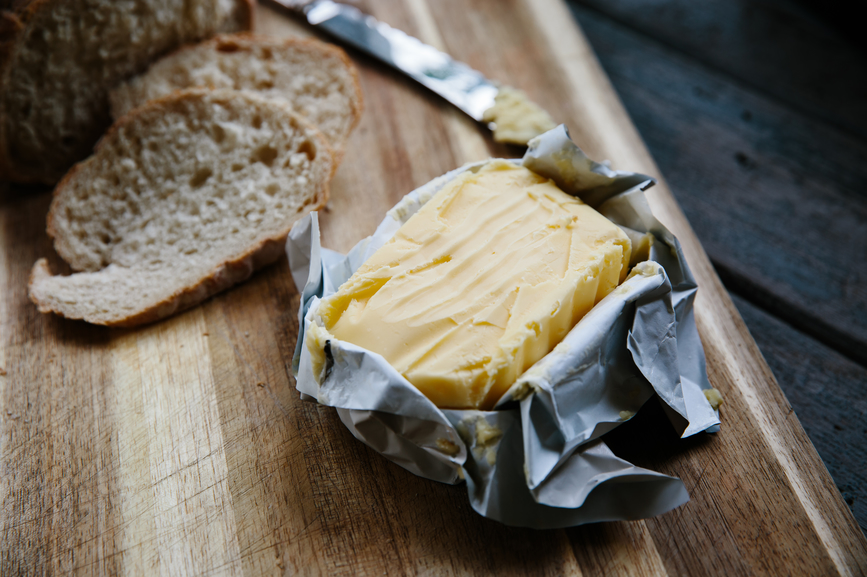
“Butter is an amazing food! It impacts cooking due to the fat content,” says Jackson. “There are many different types of butter to try, like cultured butters, grass-fed, and Amish butter.”
If you’re using nothing but store-brand butter, Jackson says you’re missing out. And if you use nothing but fancy butter, you’re wasting money. To best complement your meals, every refrigerator should be stocked with different types of butter for different situations. Let’s talk about your options.
Different types of butter, explained by a food scientist
1. Salted butter
“Salted butter has salt added so you’ll want to add less salt when you cook with it versus unsalted butter,” says Jackson. “I’d also steer clear of using salted butter in baking.”
2. Ghee or clarified butter
“Ghee has been heated to remove impurities in the butter, such as water, protein, lactose, and the purified top layer is skimmed off,” says Jackson. “It is excellent for sautéing and it’s shelf-stable.” It’s a great option for those who are lactose-intolerant, too.
3. Whipped butter
“Whipped butter has been whipped and has nitrogen added to make it less dense,” says Jackson .”It would not be good for baking or cooking, but it’s great for spreading on toast.”
4. Spreadable butter
This butter is soft even straight out of the fridge. If you like the way it tastes, go for it. But be warned: “Spreadable butter is usually butter mixed with an oil to soften it, I would not recommend it for baking or cooking,” says Jackson.
5. Light butter
“Light butter contains up to 40 percent fat and has had some of the fat replaced with fillers such as water and lactic acid,” says Jackson. “I would not recommend this for baking or cooking.”
6. Plant-based butter
“Plant-based butters, aka margarines, are made from vegetable oils like palm oil, avocado, olive, or almond oil,” says Jackson. “They are often suitable as a vegan butter replacement.” Note that while all plant-based butter is margarine, not all margarine is 100 percent plant-based. Some still include dairy so be sure to go for options that are explicitly plant-based.
7. Brown butter
“Brown Butter has been heated and has a nutty flavor from the Maillard browning reaction,” a scientific reaction that changes the flavor and color of food, says Jackson. “It is fantastic in baked goods, especially cookies—brown butter chocolate chip cookies,” says Jackson.
The best butter for the task at hand
Best butter for baking
“Higher fat content butters are great for baking in pie crusts and pastries,” says Jackson. “Standard American sweet cream does the trick, but you can splurge on other butters like European style that has a higher fat content. I would also use unsalted butter for baking as it is more of a precise science.”
Best butter for cooking
“Ghee or clarified butter is my favorite for sautéing because it has a higher smoke point, clean taste, and no lactose because it’s been heated and the fat layer is skimmed off,” says Jackson.
Best butter for spreading
“When a butter is being eaten fresh, I would recommend splurging on a high-end European style butter, cultured butter, grass-fed, or Amish butter as they will have richer flavors,” says Jackson. “I am a big Kerrygold fan!”
Oh hi! You look like someone who loves free workouts, discounts for cult-fave wellness brands, and exclusive Well+Good content. Sign up for Well+, our online community of wellness insiders, and unlock your rewards instantly.
The Link LonkMay 18, 2021 at 12:16AM
https://ift.tt/3uWS5XF
This Is How To Use the 7 Different Types of Butter, According to a Food Scientist - Well+Good
https://ift.tt/2CkeA2e
Butter Cookies
No comments:
Post a Comment